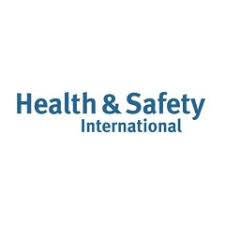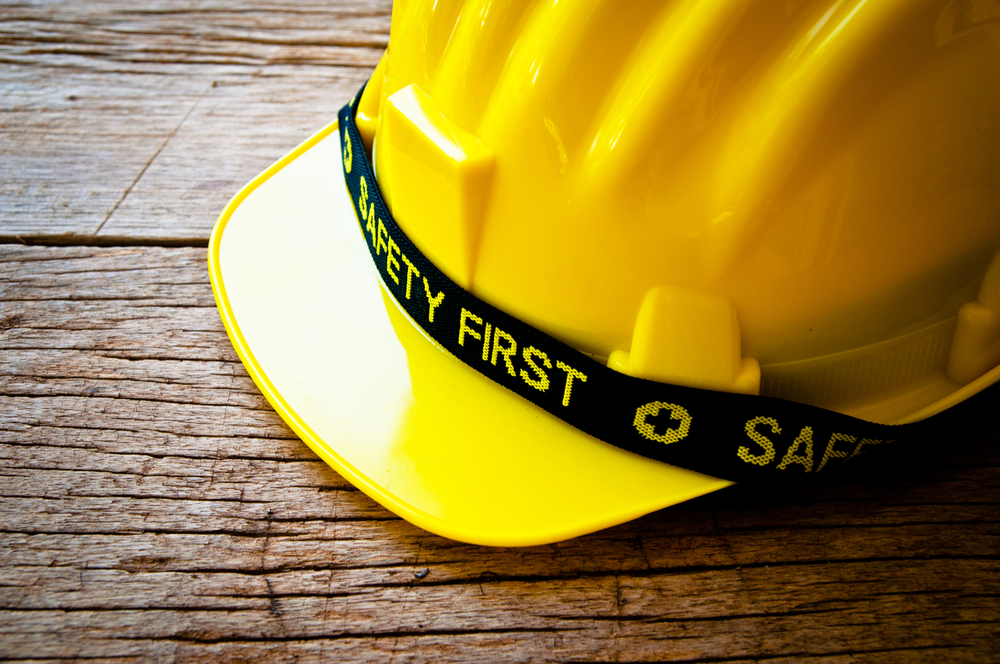News Post
September 2014 SMSE newsletter and legal update
Petroleum (Consolidation) Regulations 2014
Are you aware that the legislation on storing petrol is changing?
Although existing health and safety responsibilities will remain the same, the new Petroleum (Consolidation) Regulations 2014 will come into effect on 1 October 2014 and replace existing petrol storage legislation which will be withdrawn.
Further details on how the new regulations will affect your workplace and the storing of petrol at home or at a club/association (or similar premises) is available in our Petroleum Regulation 2014 information sheet.
Focus on Racking Storage Systems & Pallet Use
As a reminder to our clients who use racking systems:
Storage areas should be properly designated and clearly marked. The layout of storage and handling areas should avoid tight corners, awkwardly placed doors, pillars, uneven surfaces and changes of gradient.
Inspect pallets each time before use to make sure that they are in a safe condition. Take damaged pallets out of use for repair or destruction. Handle empty pallets carefully – do not drag or throw them about.
Pallets should be loaded correctly to ensure load stability; banding, shrink or stretch wrap can help with this.
If you use pallet racking in your warehouse, make sure the pallets you use are suitable for the type of racking you have.
Racking systems should be properly designed and installed, this includes being able to safely take the load of the goods being stored. Protect racking if it is likely to be struck by lift trucks and other vehicles.
Inspect racking regularly to make sure it is repaired and maintained properly and is safe. You should use three types of inspection:
1. immediate reporting of damage and defects;
2. visual inspections at regular intervals; and
3. ‘expert’ inspections carried out at intervals by a competent person.
Warehousing
Where you find damage that affects the safety of the racking system, offload the racking and introduce controls to prevent it being used until remedial work has been carried out.
Keep a record of inspections, damage and repairs, e.g. in a logbook.
Further reading: Warehousing and storage: A guide to health and safety HSG76 (Second edition) HSE Books 007 ISBN 978 0 7 76 6 5 8
Consultation suggests ‘mini’-AcoP
The outcome of the public consultation on the proposals to revise the Construction (Design and Management) Regulations 2007 (CDM 2007), are due to be considered by the HSE board on 13 August 2014.
One of the cases made was to develop a new, shorter signposting AcoP, which will be complemented by HSE and joint- CDM cindustry guidance.
As expected, the consultation has created much debate within the industry, a factor which HSE acknowledges within the ‘next steps’ section of the document: “What has emerged from the consultation is a strong degree of agreement on the board proposals tempered by a diverse range of often opposing views on the details of the proposals.”
The consultation received over 1,400 responses, which is among the highest of any consultation undertaken by HSE.
Engineering firm pays over £190,000 in nerve damage case
An aerospace engineering firm has been ordered to pay £190,000 after 24 of its workers were diagnosed with debilitating nerve conditions after being exposed to high levels of vibration for several years at the company’s premises.
The company was prosecuted at Crown Court in July after the workers developed either hand arm vibration syndrome (HAVS) or carpal tunnel syndrome. Some of the workers had to undergo operations and some had to be removed from the work they were doing. One was given work without any vibration exposure but was later made redundant. A skilled metal sheet worker, he is now unable to work in this field.
HAVS includes symptoms such as blanching and numbness in the fingers, especially in the cold, as well as pins and needles, which can be extremely painful. This is due to damage to the small blood vessels and nerves supplying the hands. Sufferers can have difficulty picking up small objects and performing tasks such as doing up buttons.
Sufferers of carpal tunnel syndrome also experience pain and pins and needles, especially at night, and a reduction in grip. An operation is normally needed to release the nerve, although this is less successful if they have been exposed to vibration.
The Crown Court heard that although HSE was notified of an employee being diagnosed with HAVS in 2010, the issue dated back to 2005 when the company’s health and safety committee asked it to carry out a suitable risk assessment for exposure to vibration, and act on the result.
An investigation showed that:
- An assessment of the company’s tools took place in 2006 which identified some, including drills, grinders and hammers, posed a high risk from exposure to vibration. However, they were not taken out of service and no controls were put on their use until 2010.
- Some employees used their own tools, which were also not assessed and therefore no controls put in place.
- Although the company provided some health surveillance for employees, it was not sufficient to identify symptoms early and refer individuals to occupational health specialists for timely diagnosis and management.
The company was fined a total of £125,000 and ordered to pay £65,805 in costs after admitting two breaches of section 2(1) of the Health and Safety at Work etc. Act 1974.
Speaking after the hearing, HSE inspector said: “The Company was, from 2005, regularly being made aware that employees were suffering from vibration-related symptoms. They were being supplied with this information directly from staff and from their occupational health nurse. However, they chose to ignore this information and allowed employees to work unrestricted with high risk tools, or their own tools.
“The company was slow to implement improvements even after HSE’s involvement and had to be issued with an improvement notice in 2011 to ensure compliance.
“Adequate assessment of the risk from vibration, provision of tools with lower vibration levels, and a good system of work would have ensured workers were not over-exposed to vibration. A better health surveillance system would also have identified problems earlier, and symptoms could have been managed to prevent them getting worse.”
Water park admits failings relating to teenager’s death
A water park company has pleaded guilty to health and safety breaches following the death of a teenager who drowned at a Park and Beach in July 2010.
The fifteen-year-old could not swim and died after slipping under the water. It was reported that she was trying to rescue her cousin.
A four-day inquest in 2012 ruled her death was an accident.
Following charges brought by the Council, the company admitted in court to failing to ensure the health and safety of the public.
The company is due to be sentenced in October.
Prison for developer who ignored prohibition notices
A developer who verbally and physically assaulted an HSE inspector, has been sent to prison for 30 months after he repeatedly breached prohibition notices which were put in place to ensure the safety of workers while redeveloping a former office block.
HSE visited the site February 2013 following complaints from local residents worried about
debris falling from upper storeys and of the danger to workers being left without any protection from falling while working at height.
The developer, who was found to be in control of workers at the site, verbally abused the
HSE inspector who visited. The inspector had to return with the police officers later to serve prohibition notices requiring an immediate stop to unsafe work at the site. The developer reacted strongly to this, physically assaulting the inspector.
After further reports that work had not stopped, HSE issued a further prohibition notice in April 2013, which was breached within just one hour of being served.
The HSE investigation found that there were no safety measures in place to prevent injury to workers from debris falling from height and that there was also a real risk of injury to members of the public using the road and pavement next to the site.
The developer was prosecuted by the HSE at Crown Court in July for serious breaches of the Health and Safety at Work etc. Act 1974. He was given a 30 month prison sentence to be served concurrently with three 12-month prison sentences after being found guilty of three counts of contravening a Prohibition Notice contrary to section 33(1) (g) of the same Act. He was also ordered to pay costs of £5,000. He was also found guilty of assaulting an inspector from HSE at a separate court appearance.
After the case, HSE inspector, said: “Although no one was injured as a result of the woefully inadequate working practices this is nevertheless a serious case.
“The working conditions on this site were truly appalling with absolutely no provision for workers’ safety. In addition, the repeated breaching of prohibition notices – without any attempts to put right the reasons why work had been stopped – put workers and the general public at serious risk.
“The developer refused to accept that he had a responsibility to make sure people who worked for him, and any member of the public living or working near his site, were not subjected to unnecessary risks – and vigorously and violently resisted all attempts to make him take actions to protect them.
“Putting safe working practices in place is often simple and inexpensive and, where this doesn’t happen, the costs, both financial and personal, can be immense.”
HSE inspections reveal ‘unacceptable’ toll of ill health and fatal disease
Proactive inspections of construction sites by HSE have found that many are failing to prevent health risks.
A national targeted inspection focusing on health risks for construction workers saw enforcement action taken at one-in-six of 560 sites visited.
HSE inspectors undertook a two-week period of proactive inspections and demanded improvements, and in some cases put an immediate stop to work activities, where they fell short of expected standards.
Inspectors focused on significant health risk issues, such as respiratory risks from dust containing silica materials, exposure to other hazardous substances such as cement and lead paint, manual handling, noise and vibration.
Final figures have yet to be confirmed by inspectors found that conditions were so poor in some situations that the work had to be stopped on at least 13 occasions.
Of the 560 sites visited, inspectors served enforcement notices on 85 of them. Thirteen prohibition notices were served (where certain work or practices had to be stopped until improvements were made) and 107 improvement notices. A total of 239 health-related notices of contravention were served at 201 of the sites.
“We recognise the construction sector’s progress in reducing the number of people killed and injured by its activities. But it is clear from these figures that there is an unacceptable toll of ill health and fatal disease in the industry,” said HSE’s chief inspector.
“So, to encourage the industry to treat health issues in the same way as safety, HSE’s inspectors will consolidate the efforts of this initiative throughout the rest of the year by looking at the prevention and control of health risks in construction alongside their continued assessment of the management of safety risk issues.”
For more information, visit: www.hse.gov.uk/construction
Worker’s jaw shattered after firm neglects safety
A recycling firm has been prosecuted after an employee had his jaw shattered into “pieces like cornflakes” when he was hit by a piece of plastic pipe ejected from a bandsaw.
The worker was cutting down the old gas pipe for the company in 2010 when the incident happened.
The pipe was some 50cm long and 30cm in diameter and 2cm thick. As he fed the domed section of the pipe into the bandsaw, the teeth of the blade stuck into the plastic, rotated it round the domed end and ejected it.
The pieces was thrown out at high speed and struck him in his throat and under his chin. It broke both upper and lower jaw bones and burst his jaw hinges.
The Company pleaded guilty in July to safety failings Court following an investigation by HSE.
The court heard the worker had undergone a number of operations, including a bone graft from his hip, over the past four years to reconstruct his jaw. He still suffers from a continual feeling of ‘pins and needles’ caused by irreparable nerve damage, and has problems eating.
Early in its investigation, HSE identified that after the incident, there had been two further instances of plastic pipe being ejected as it was being sawn and striking the operators, including one where the workers was a 16-year-old trainee.
As a result, a prohibition notice was served on the company preventing any further use of the bandsaws for cutting this sort of material.
HSE found the company had not identified the added risks of using the bandsaws to cut across cylindrical material, such as the rotation and ejection of pieces from the saw.
There were no measures, such as the use of jigs clamps or wedges, to allow the machine to be more safely used.
The company was fined £7,000 and ordered to pay £3,000 in costs after admitting a breach of the HSWA 1974.
Following the case, HSE inspector, said: “The Company should have properly investigated how the bandsaws operated and fully understood the risks of use that were outlined in the instruction manual. That simple exercise would have demonstrated the need to put effective controls in place to safeguard their employees.
“The use of simple clamps of wedges, or the use of alternative cutting equipment, would have allowed the job to be safely carried out and avoided the life-changing injuries that this worker suffered. In addition, it would have not put others – including a teenager – in danger.
“Waste processing and recycling is a high-risk industry which has a disproportionately large share of fatal and serious injuries. Both individual companies and the industry collectively, must improve the way that health and safety, both of employees and the public, is managed.”
Catastrophic failure’ leads to major chemical leak
A company has been fined £50,000 after four of its chemical storage tanks failed and spilled 150 tonnes of hazardous material, including aluminium chloride and hydrochloric acid at an industrial estate.
The industrial estate was evacuated and access roads closed as a result of the in July 2013, although thankfully nobody was harmed.
Latest News
Health and Safety in Schools Checklist
Health and safety should be a top priority in any workplace, but especially in schools. Not only are you responsible for your staff’s safety, but you need to maintain the welfare of your pupils too. To do so, you must uphold your legal complian..
It can be difficult to decide your future path - a lot can ride on it, after all - but a career in health and safety could be the right choice for you. There are several types of careers in the health and safety industry that might be a good fit..
What is ISO 45001?
If you’re wondering what ISO 45001 is, then this is the guide for you. Replacing the old OHSAS 18001 standard, ISO 45001 is the new international standard for occupational health and safety management. In this guide, we'l..
Who Enforces Health and Safety?
The enforcement of health and safety is crucial to maintain healthy workplaces. The term health and safety itself covers the safety legislation and safety law that comes under the Health and Safety at Work Act 1974. In general, this means t..
Health and safety training is a requirement in the workplace, no matter which sector you work in. Our experts at SMS Europe have been providing an extensive range of specialist health and safety services for almost 20 years. To help make work en..
Health and safety in the workplace is all about controlling risks in a way that protects both your employees and your company. Strong leadership, including your employees, managers, suppliers, contractors, and consumers, is a characteristic of great ..
Health and safety in the workplace is immeasurably important. But, without the Health and Safety at Work Act of 1974, we might have never prized safety so highly. This piece of workplace legislation is highly significant and indeed has transform..
Fire Safety and Fire Risk Assessment at Leased Offices and Buildings Fire safety at leased single and multi- tenanted offices can be approached in a number of ways. Generally speaking, there are three types of premises, (single occupancy lea..
Safety Gloves
Please have a read at SMSE Managing Director Philip Marsden's article on Safety Gloves which is published in the February 2022 edition of Health and Safety International Magazine. https://www.hsimagazine.com/article/fits-like-a-glove/ We wo..
Current Health and Safety Industry Trends
New Guidance Released for Managing Home Workers As an employer, you have the same health and safety responsibilities for those who work from home as you do for all other employees who may work from the workplace. In most cases, the dange..
Who Is Responsible for the Health and Safety on a Building Site? Legally, the responsibility of health and safety within the business lies with the employer. It is up to them to make sure the environment meets the necessary health and safety requi..
No one wants to be injured whilst at work, and no one wants their staff to be injured, especially whilst on the job. That doesn’t mean that accidents don’t happen. In fact, each year an average of 22 manufacturing workers die in workplace..












